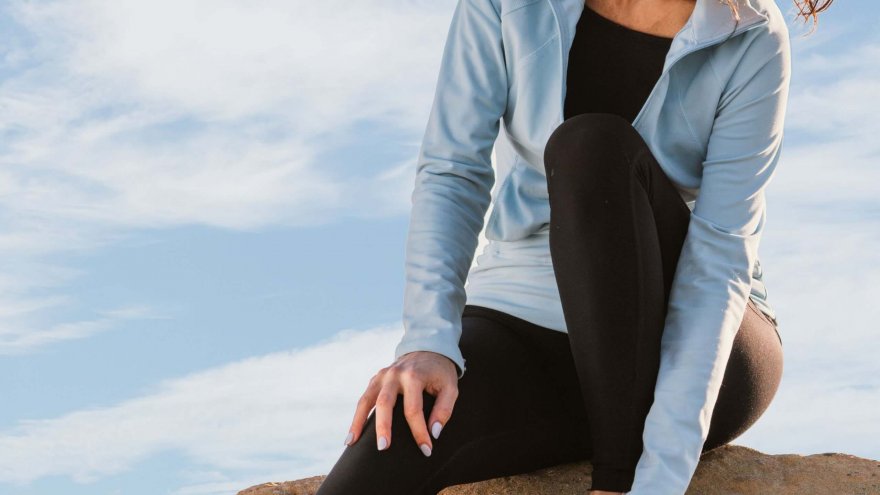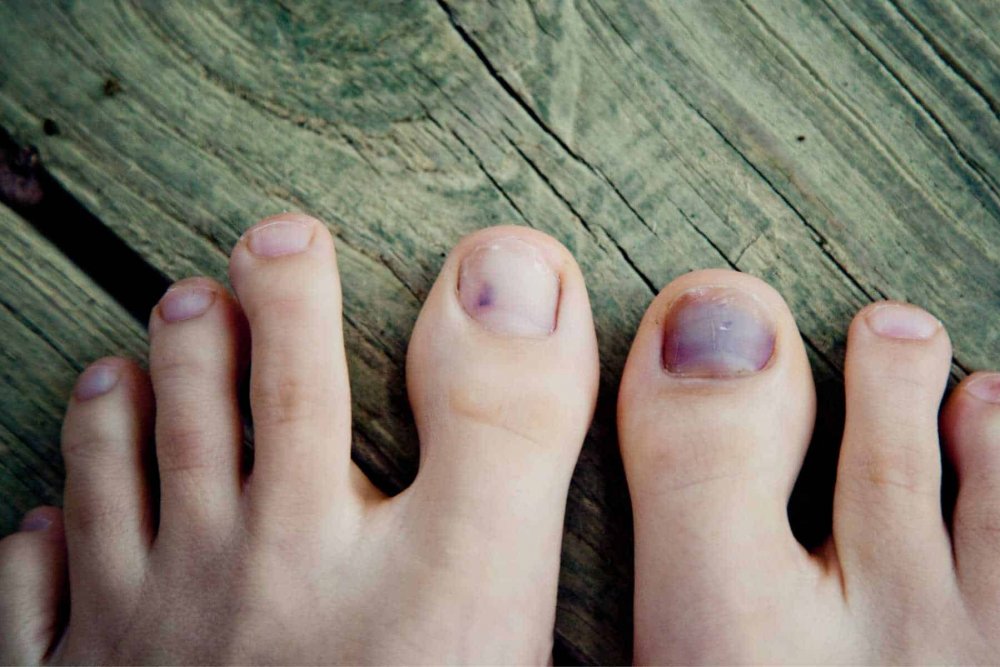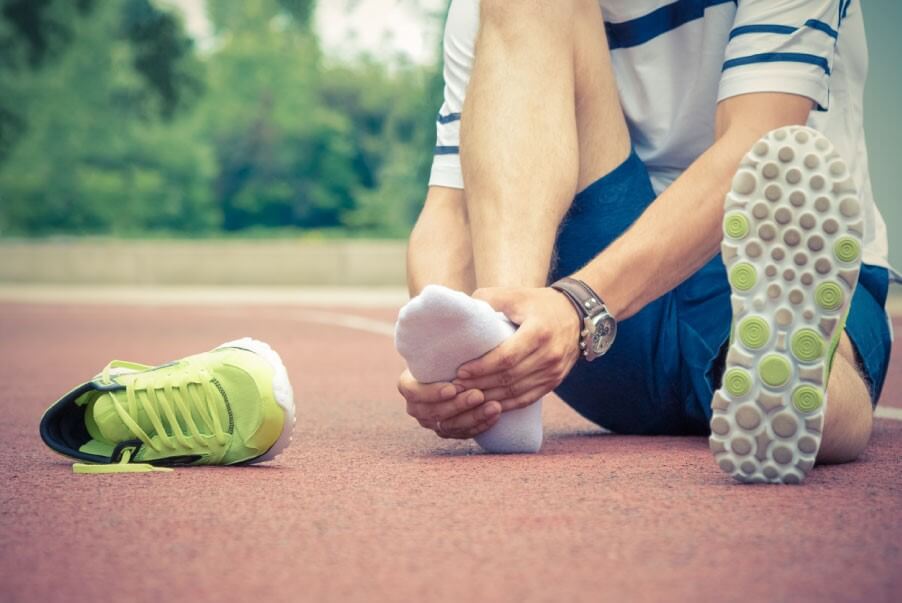Do You Have A Runner’s Toe?

Runners suffer a multitude of injuries. Like it or not, it can come with the territory. Often you get warnings about watching out for your knees. Many people are quick to lament about hamstring pain.
Think about the small part of your body that is essential to every stride and step you take: the toe. Getting a runner’s toe can have dire consequences for a runner!
Why Do My Toes Hurt After Running?
Since running is done by pushing off on the toes, you may find your toes are sore after a run. This can be especially true if you increase your mileage quickly.
One problem runners may fall victim to is hallux rigidus, a fancy term that literally means “stiff big toe.” Commonly called “turf toe” by other athletes, especially football players, you can experience this for a few reasons.
One cause is straining the joint that connects your big toe to your foot. Overuse or injury are the top two reasons athletes get this injury, which can usually be alleviated by rest.
Sometimes, however, the pain seems to lie right in the toenail. This is a common phenomenon known as runner’s toe.
What Is Runner’s Toe?
Runner’s toe is often known as runner’s toenail or jogger’s toenail. Seen by many runners as a badge of honor, it really is something you should try your best to avoid experiencing when you get bruising under your toenail that sometimes results in black toenails and/or actually losing the nail.
If you notice that you have toenails that seem to be throbbing in pain post-run, you may have runner’s toe. Since it usually starts as a dull, thud pain in the toenail, you may be able to help stave up further problems by just resting a little.
However, if you are deep in training and steadily upping the mileage, rest is often impossible. What then?

The first thing to ask yourself is if your shoes fit properly. If shoes are too big, your feet are moving around much more than they should which can lead to bruising.
On the opposite side of the spectrum, too small of shoes yield the same result. In this case, your feet will literally be crashing into the front of your shoe. This impact, either from moving around or hitting the front of the shoe, can cause significant bruising.
Another culprit can be improperly lacing your shoes. Believe it or not, how you lace up and tie can help you create or prevent problems for yourself. Lacing can help prevent a host of problems!
How Do You Treat A Bruised Toe?
The best way to treat a bruised toe is to give it some time to heal. You may also find a foot soak in Epsom salts helps your foot to feel better and alleviate some discomfort.
What if the bruising is so severe you can see blood pooling underneath? Although some runners advise you to pop and drain the blood, podiatrists will typically advise against this practice.
If you truly feel compelled to release the pressure by draining blood, there is a method most runners do to accomplish this. They sterilize a paperclip in a flame. Then, you can press the paper clip into the center of the toenail. It will essentially melt a hole into the nail. Be very careful not to “drill down” too deeply!
You will see when the blood starts to drain out. It is best to use antibiotic cream and bandage the toe if you choose to do this. Be careful to keep the toe and that area clean and dry. If you do run, don’t stand around in sweaty socks.
Do Runners Toenails Fall Off?
Yes, sometimes the toenail of a runner just falls off. The constant impact the toenail takes while pounding the pavement causes bruising, and, eventually, they sometimes just stop hanging on.

The place of impact (where your toe hits your shoe over and over) causes microtrauma. This can lead to so much trauma that the toenail basically “dies.” Of course, it does not really die.
The trauma causes bleeding under the toenail. That bleeding will often cause a separation between the nail plate and the toenail. This is when your toe is in danger of losing a nail!
An Ounce Of Prevention
There are some things you can do to try and prevent a runner’s toe. First, be certain that your shoes fit correctly. Remember what we said before: not too loose nor too tight.
If you have not had yourself fit for a pair of running shoes, you should certainly do that. If your shoes fit correctly, are they broken down and in need of replacement? That could be another problem.
You can also use the ankle lock lacing technique. This way to lace up your running shoes can help prevent the slippage that is likely to cause bruised toenails.
Slowly and methodically increasing your mileage is another way to help prevent bruised toenails. If you increase mileage too quickly, you are more likely to suffer this fate. Adhering to the rule of not adding more than 10% mileage to your weekly total seems to work for most runners.
Keeping your toenails cut short is another helpful tip. In addition, you should cut them square and not rounded. Short, square-cut toenails are less likely to suffer as harsh of impact as longer or rounded ones.
Wearing socks with a bit more cushion, especially throughout the toes, is another thing you can do to keep your feet comfortable and happy.
What If All That Does Not Work…
You do need to realize that you can be doing everything right and still lose a toenail. Did you know that anywhere from 14 – 20 percent of runners lose a toenail at some point in their running career? Some more than once!
What that means is that you are in good company. No, that is not to say that you have to just accept it as inevitable; with a few changes, some people can prevent it from happening again. However, you could be doing everything right and just might keep getting bruised, sore toenails that eventually fall off.
If that is you, just decide that you’re a badass and consider your missing toenail a badge of honor.
Sources
- , Runner’s Toenail: Badge of Honor or Medical Concern?, Health Website
Latest Articles
 Is Running on a Treadmill Easier Than Running Outside?Runners have their own preferences, whether it is treadmill running, running outside on the road, or exploring trails. So...
Is Running on a Treadmill Easier Than Running Outside?Runners have their own preferences, whether it is treadmill running, running outside on the road, or exploring trails. So... Is It OK to Use Trail Running Shoes on the Road?While trail running shoes can be used on roads, especially in situations where a runner encounters mixed terrains or pref...
Is It OK to Use Trail Running Shoes on the Road?While trail running shoes can be used on roads, especially in situations where a runner encounters mixed terrains or pref... How to Fix Sore Quads After Running?Rest, ice, gentle stretching, and over-the-counter pain relievers can help soothe sore quads after running. Also, ensure ...
How to Fix Sore Quads After Running?Rest, ice, gentle stretching, and over-the-counter pain relievers can help soothe sore quads after running. Also, ensure ... 10 Fruits With The Most Electrolytes to Replace Sports DrinksThese fruits are high in electrolytes such as potassium, magnesium, and calcium, essential for hydration, muscle function...
10 Fruits With The Most Electrolytes to Replace Sports DrinksThese fruits are high in electrolytes such as potassium, magnesium, and calcium, essential for hydration, muscle function...

